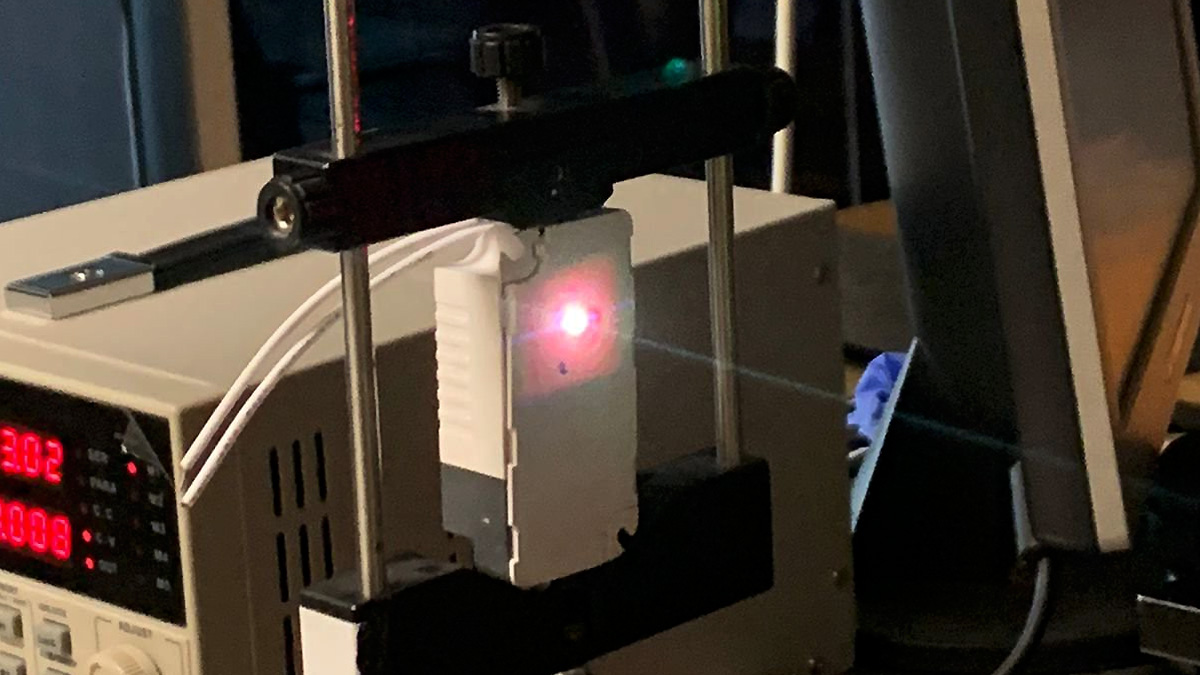
November 20, 2024 This article has been reviewed according to Science X's editorial process and policies . Editors have highlightedthe following attributes while ensuring the content's credibility: fact-checked trusted source proofread by Chris Kocher, Binghamton University More than 4 million people in the U.S.
have glaucoma, a group of eye diseases that can damage the optic nerve and lead to vision loss. It's the second-leading cause of blindness worldwide and there's currently no cure, but there's a way to help prevent vision loss through early detection and treatment. The two main treatment options, however, are inefficient and have downsides.
Medicated eyedrops are noninvasive but can't be absorbed for full effectiveness. Repeated injections into the eye can lead to infections or inflammation, not to mention patient discomfort. Researchers at Binghamton University are exploring several new glaucoma treatments that would be less invasive.
In a study recently published in the Journal of Materials Chemistry B , Assistant Professor Qianbin Wang and Ph.D. student Dorcas Matuwana from the Thomas J.
Watson College of Engineering and Applied Science's Department of Biomedical Engineering shared their findings for drug-carrying liposomes that could be activated in the eye using near-infrared light. Also contributing to the research were BME Assistant Professor Siyuan Rao; Eunji Hong, Ph.D.
'23; Sizhe Huang, Ph.D. '24; and Ph.
D. students Xinxin Xu, Geunho Jang and Ruobai Xiao. "The first problem we found is that most pharmacological compounds are hydrophobic, which means they have low water solubility," Wang said.
"The second problem is using a thermal effect to trigger the release—how do we do that without affecting a patient's comfort or having side effects?" The liposomes—which are small, spherical, artificial vesicles that can deliver drugs and other molecules to specific sites in the body—have gold nanorods embedded on their fatty surface. The gold heats up under a specific near-infrared wavelength and breaks down the membrane to release the needed medication, which is mixed with cyclodextrin to aid their absorption into the eye. The Binghamton researchers tested the liposomes to treat glaucomatous neurodegeneration in mice, and they view it as a better alternative to current treatments.
"We're calling it 'minimally invasive' because it would be a one-time injection that's efficient enough to induce the lowered intraocular pressure that's needed to maintain glaucoma," Matuwana said. "For our system, it's a direct injection. We would inject it once and deliver the drug using near-infrared light.
There would be no need to constantly go back and get injections into the eye, which is very invasive." Wang and Matuwana came to Binghamton last year from the University of Massachusetts Amherst, when Wang became a faculty member at Watson College and transferred his Neuromechanics Lab to the BME Department. "Working with Dr.
Wang is amazing," Matuwana said. "He always wants the best from you. With this publication, he's highlighted as an emerging investigator, and for us as students, we want to improve constantly to get the best results for him.
" Wang and his Neuromechanics Lab are already researching refinements for this liposome technique and want to explore other options, including genetic engineering. "Currently, glaucoma does not have a comprehensive treatment," he said. "We are trying to contribute to this field to see if we can find a better way to treat glaucoma in the future.
" More information: Dorcas Matuwana et al, Near-infrared activated liposomes for neuroprotection in glaucoma, Journal of Materials Chemistry B (2024). DOI: 10.1039/D4TB00745J Provided by Binghamton University.














